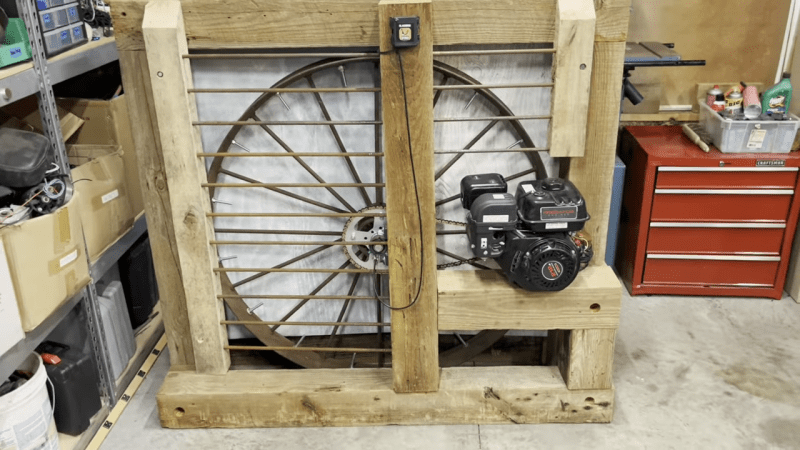If you want to dyno test your tuner car, you can probably find a couple of good facilities in any nearby major city. If you want to do similar testing at a smaller scale, though, you might find it’s easier to build your own rig, like [Lou] did.
[Lou’s] dynamometer is every bit a DIY project, relying on a 100-year-old wagon wheel as the flywheel installed in a simple frame cobbled together from 6×6 timber beams. As you might imagine, a rusty old wagon wheel probably wouldn’t be in great condition, and that was entirely true here. [Lou] put in the work to balance it up with some added weights, before measuring its inertia with a simple falling weight test. The wheel is driven via a chain with a 7:1 gear reduction to avoid spinning it too quickly. Logging the data is a unit from BlackBoxDyno, which uses hall effect sensors to measure engine RPM and flywheel RPM. With this data and a simple calibration, it’s possible to calculate the torque and horsepower of a small engine hooked up to the flywheel.
Few of us are bench testing our lawnmowers for the ultimate performance, but if you are, a build like this could really come in handy. We’ve seen other dyno builds before, too. Video after the break.
















Looks like a good way to solve the mystery of gross torque”which seems to have replaced horsepower in small engine ratings. It’s most likely a nonexistent engineering term that can’t be verified in a lab.
The underlying principle of using acceleration verses time in relation to a vehicle would be interesting.
My car has Dino mode on the screen but they forgot to build in a screen freeze so you don’t have to read it at 100mph.